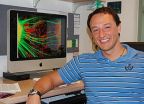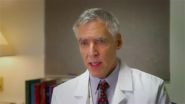Typhoid gene unravelled
2014-11-11
(Press-News.org) Lead researcher, Dr Sarah Dunstan from the Nossal Institute of Global Health at the University of Melbourne said the study is the first large-scale, unbiased search for human genes that affect a person's risk of typhoid.
Enteric fever, or typhoid fever as it more commonly known, is a considerable health burden to lower-income countries.
This finding is important because this natural resistance represents one of the largest human gene effects on an infectious disease.
"We screened the human genome to look for genes associated with susceptibility to, or resistance from typhoid.," Dr Dunstan said.
"We found that carrying a particular form of the HLA-DRB1 gene provides natural resistance against typhoid fever. This gene codes for a receptor that is important in the immune response, by recognising proteins from invading bacteria."
Typhoid is contracted, by consuming food or water contaminated with the bacteria, Salmonella Typhi or Paratyphi. It has been estimated that typhoid causes 200,000 deaths a year globally, and infects 26.9 million people per year.
"If we can understand this natural mechanism of disease resistance, then we can use this knowledge to help develop improved vaccines for typhoid fever, but also potentially for other invasive bacterial disease,"
Better treatments and vaccines are needed for typhoid fever as the infecting bacteria are getting increasingly more resistant to antibiotic treatment, and the current vaccine is only moderately effective and does not protect against paratyphoid fever, which is increasing within Asia.
INFORMATION:
This work was conducted in patients from Vietnam with findings then replicated in independent patient cohorts from Vietnam and Nepal
The research collaboration was between the Genome Institute of Singapore and Oxford University Clinical Research Units in Vietnam and Nepal.
ELSE PRESS RELEASES FROM THIS DATE:
2014-11-11
Weeds in the UK are still evolving hundreds of years after their introduction and are unlikely to have yet reached their full potential as invaders, UNSW Australia scientists have discovered.
The study is the first to have tracked the physical evolution of introduced plant species from the beginning of their invasion to the present day, and was made possible by the centuries-old British tradition of storing plant specimens in herbaria.
The research team, led by Habacuc Flores-Moreno, looked at three common weeds - Oxford ragwort, winter speedwell and a willow herb - which ...
2014-11-11
A controversial medication used by breastfeeding women should not be restricted because of the benefits it offers mothers and their babies, according to researchers at the University of Adelaide.
The medication domperidone has recently been the subject of warnings from the European Medicines Agency based on research that there is a link between the medication and fatal heart conditions.
Domperidone has been banned in the United States for years because of fatal cardiac arrhythmias among cancer patients who had been prescribed the drug to prevent nausea and vomiting.
However, ...
2014-11-11
This news release is available in German. X-rays are widely used in medicine and in materials science. To take a picture of a broken bone, it is enough to create a continuous flux of X-ray photons, but in order to study time-dependent phenomena on very short timescales, short X-ray pulses are required. One possibility to create short hard X-ray pulses is hitting a metal target with laser pulses. The laser rips electrons out of the atoms and makes them emit X-ray radiation. Electrical engineers at the Vienna University of Technology (TU Wien) together with researchers ...
2014-11-11
With the help of mouse models, induced pluripotent stem cells (iPSCs) and the "tooth fairy," researchers at the University of California, San Diego School of Medicine have implicated a new gene in idiopathic or non-syndromic autism. The gene is associated with Rett syndrome, a syndromic form of autism, suggesting that different types of autism spectrum disorder (ASD) may share similar molecular pathways.
The findings are published in the Nov. 11, 2014 online issue of Molecular Psychiatry.
"I see this research as an example of what can be done for cases of non-syndromic ...
2014-11-11
An international research team led by Dan Distel, director of the Ocean Genome Legacy Center of New England Biolabs at Northeastern University, has discovered a novel digestive strategy in shipworms. The breakthrough, the researchers say, may also be a game-changer for the industrial production of clean biofuels.
To start, it's important to note that shipworms, the so-called "termites of the sea," aren't actually worms--they're bizarre clams that ...
2014-11-11
WASHINGTON - Hospital workers who deal directly with patients wash their hands less frequently as their workday progresses, probably because the demands of the job deplete the mental reserves they need to follow rules, according to new research published by the American Psychological Association.
Researchers led by Hengchen Dai, a PhD candidate at the University of Pennsylvania, looked at three years of hand-washing data from 4,157 caregivers in 35 U.S. hospitals. They found that "hand-washing compliance rates" dropped by an average of 8.7 percentage points from the beginning ...
2014-11-10
The Assyrian Empire once dominated the ancient Near East. At the start of the 7th century BC, it was a mighty military machine and the largest empire the Old World had yet seen. But then, before the century was out, it had collapsed. Why? An international study now offers two new factors as possible contributors to the empire's sudden demise - overpopulation and drought.
Adam Schneider of the University of California, San Diego and Selim Adalı of Koç University in Istanbul, Turkey, have just published evidence for their novel claim.
"As far as we know, ...
2014-11-10
Results of a federally-funded pooled analysis of five prospective cohort studies indicate that cigarette smoking prior to the first diagnosis of lung (stage I), bladder, kidney or head and neck cancer increases risk of developing a second smoking-associated cancer. This is the largest study to date exploring risk of second cancers among current smokers.
An analysis of five large, prospective cohort studies indicates that lung (stage I), bladder, kidney and head and neck cancer survivors who smoked 20 or more cigarettes a day prior to their cancer diagnoses have an up ...
2014-11-10
Nestled among a triplet of young galaxies more than 12.5 billion light-years away is a cosmic powerhouse: a galaxy that is producing stars nearly 1,000 times faster than our own Milky Way. This energetic starburst galaxy, known as AzTEC-3, together with its gang of calmer galaxies may represent the best evidence yet that large galaxies grow from the merger of smaller ones in the early Universe, a process known as hierarchical merging.
An international team of astronomers observed these remarkable objects with the Atacama Large Millimeter/submillimeter Array (ALMA).
"The ...
2014-11-10
VIDEO:
Dartmouth researchers say lung cancer screening in the National Lung Screening Trial meets a commonly accepted standard for cost effectiveness as reported in the Nov. 6 issue of the New...
Click here for more information.
Dartmouth researchers say lung cancer screening in the National Lung Screening Trial (NLST) meets a commonly accepted standard for cost effectiveness as reported in the Nov. 6 issue of the New England Journal of Medicine. This relatively new screening ...
LAST 30 PRESS RELEASES:
[Press-News.org] Typhoid gene unravelled






